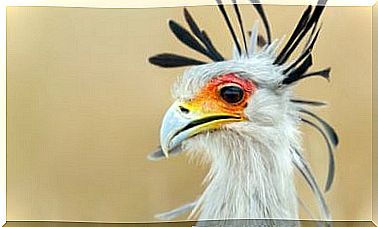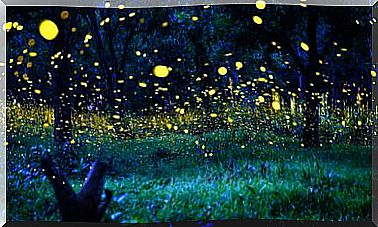The 5 Most Poisonous Jellyfish
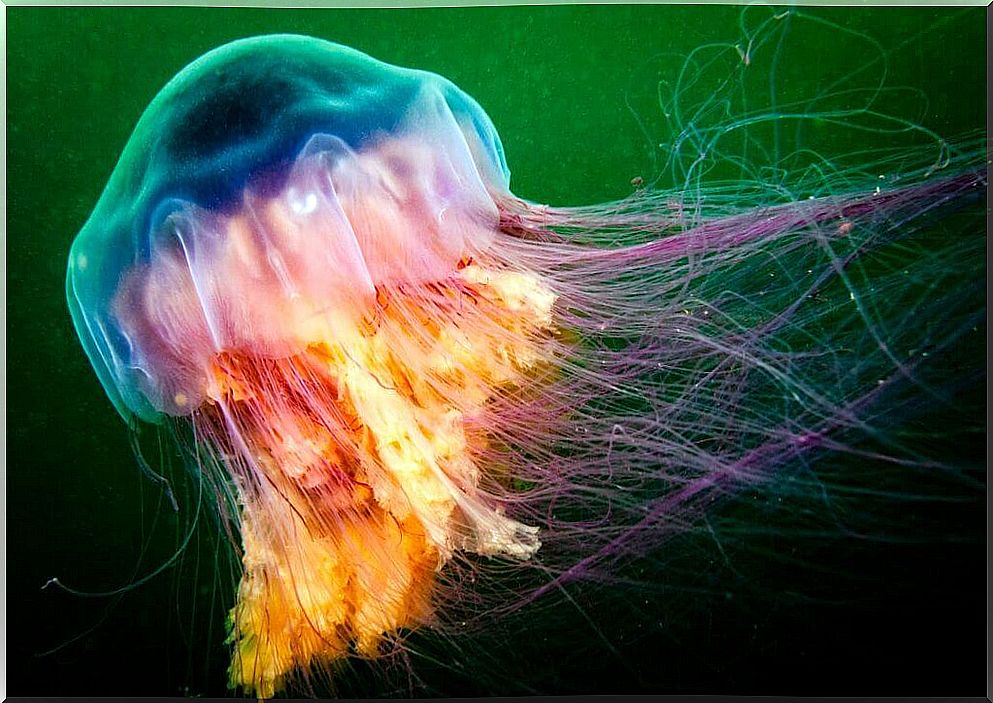
The ocean is one of the most unexplored corners of planet Earth and it contains the most poisonous jellyfish. In this huge submerged ecosystem, not only jellyfish are found, as many other species of animals and plants can also be observed.
The name jellyfish is respectful in itself, since these invertebrates are associated with pain due to their sting. However, not all species in this group are poisonous. So that everyone can make this distinction correctly, we’ll introduce the most poisonous jellyfish below and show you how to recognize them.
Why are jellyfish poisonous?
Although jellyfish are harmless looking animals, nothing could be further from the truth. Evolution allowed them to develop defensive techniques, such as producing a highly toxic poison.
Evolutionarily, the main toxicity function of jellyfish is related to a defensive role. Several studies have determined that the composition of the venom contains substances that are dangerous to humans.
If humans are exposed to high doses of these substances, they can suffer great harm. Even low-dose reactions are lethal to their prey and harmful to our species.
The 5 most poisonous jellyfish
Next, we will present a total of 5 jellyfish, classified as poisonous. Knowing a little more about them will allow us to identify them in order to know if we are at risk when we find any jellyfish on the shore. Come on!
1. Sea nettle jellyfish
Among the existing jellyfish species, the jellyfish Chrysaora fuscescens stands out . The specimens of this species are easily located due to their size – 1.80 meters – and their golden-brown hue.
One of its most striking features is its ability to locate light. Thanks to this, they can detect prey or possible threats. Furthermore, they are capable of releasing a reddish ink.
Due to its powerful tones and its easy maintenance for man, this species is exposed in public aquariums. Fortunately, its bite is only irritating to humans, although cases of greater danger have been reported.

2. sea wasp
Despite its small size, it is estimated that only 1.4 milliliters of sea wasp venom ( Chironex fleckeri ) can cause the death of a human being within minutes. Therefore, it occupies the first place on the podium of dangerousness, being classified as the most poisonous toxic species on Earth.
It is about 6 millimeters in diameter, but its tentacles can reach 3 meters in length. It is in the size of its tentacles that the danger of this invertebrate resides, since the human being can be touched by them and take the bite. However, this animal prefers waters far from the shores of Australian beaches.
A curious fact about its sting is that, according to a study published on Science Direct , the older the specimen, the more powerful its venom. In addition, other researchers are studying the pharmacological usefulness of jellyfish poisons in hopes of developing drugs.
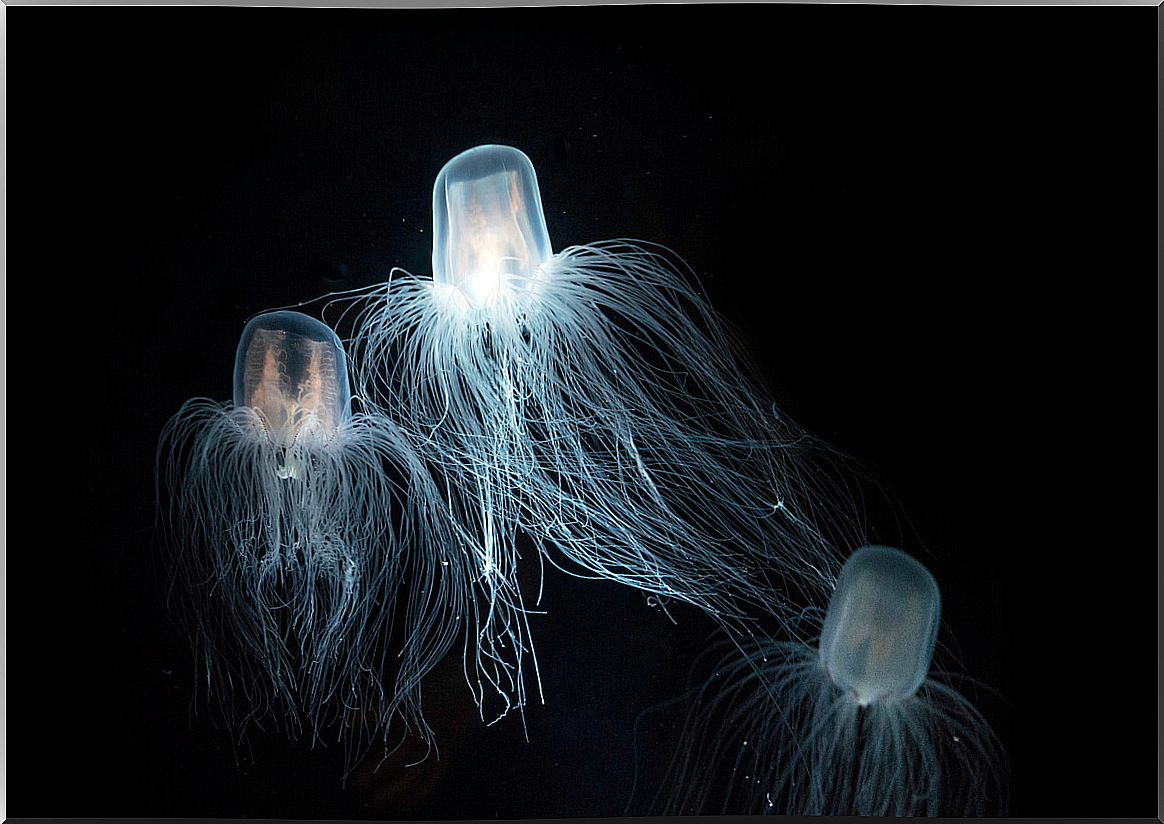
3. The Irukandji Jellyfish
Its common name comes from the inhabitants located in northern Australia called Irukandji. Along with the sea wasp, it belongs to the jellyfish cubes and, like it, the irunkandji jellyfish ( Carukia barnesi ) is in the first places of toxicity.
Apparently, its venom is 100 times more powerful than that produced by a snake. Despite being one of the smallest species of jellyfish, it was observed that the smaller its size, the more potent the toxicity of its sting.
Among the most common symptoms of your sting are: muscle cramps, a burning sensation, vomiting, headache or rapid heartbeat. The set of induced signs was called “Irukandji Syndrome”. Fortunately, the sting is not fatal if the victim receives proper treatment in time.
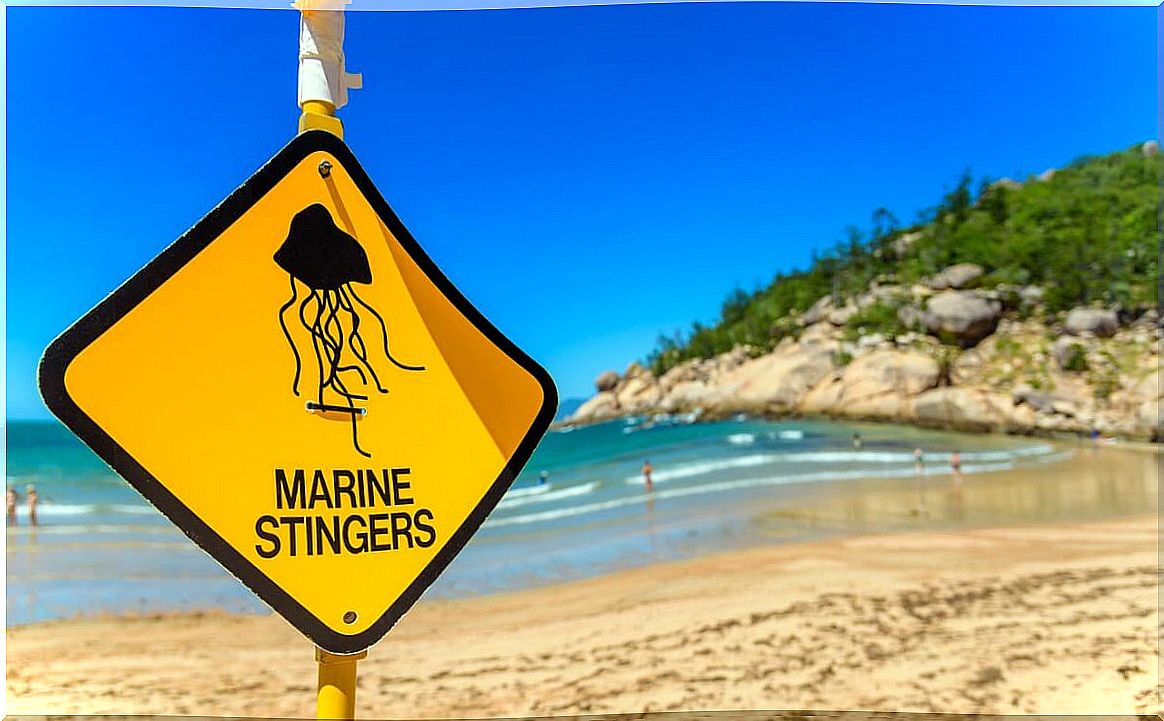
4. Hairy Jellyfish
The species Cyanea capillata , known as the hairy jellyfish, was identified as the largest jellyfish. Its bell can reach 2.5 meters and its tentacles around 30 meters, weighing a quarter of a ton.
Typical of cold waters, it is present in the North Atlantic Ocean and Australian waters. Like other jellyfish, even when dead their nematocysts remain active. This means they can cause stings long after their death.

5. Portuguese caravel
Although the Portuguese caravel ( Physalia physalis ) is not a true jellyfish, it needed a place on this list. Every year, this invertebrate appears in the news, as many specimens are stranded on beaches.
Unfortunately, after being stranded, these animals end up dying on the shore. However, his death does not mean no risk. Apparently, its tentacles remain active, even if they are separated from the body or the specimen is dead.
As we have already said, this false jellyfish is actually a colony of hydrozoa, also called a colonial organism. It is easily recognizable thanks to its pink color with bluish tones. Your presence here was necessary, as your sting could be fatal to man.
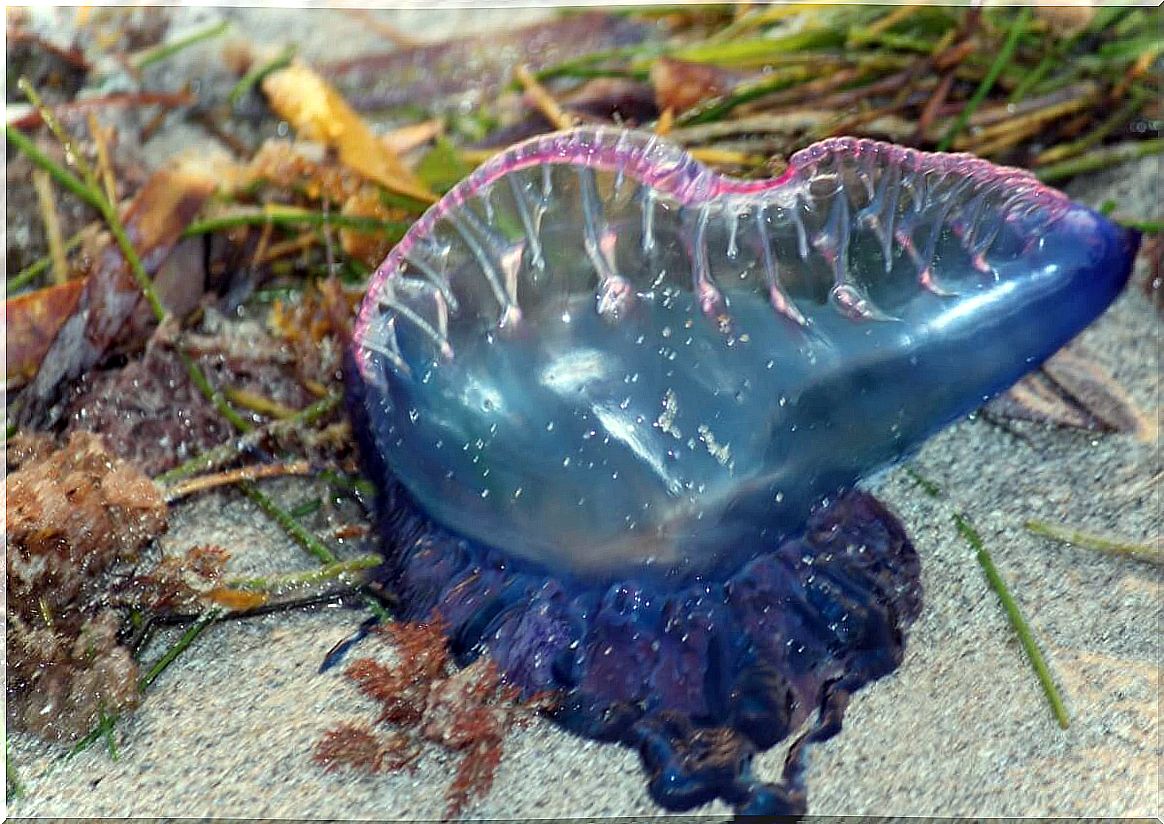
In short, the oceans that make up the Earth’s great bodies of water are inhabited by many different species. Among all of them, we talk here about jellyfish and specifically the most poisonous species.
By knowing the most relevant facts about these jellyfish, you can take action if you find them. The main premise is to get as far away as possible from its tentacles, where the poison-laden stinging cells are located.


